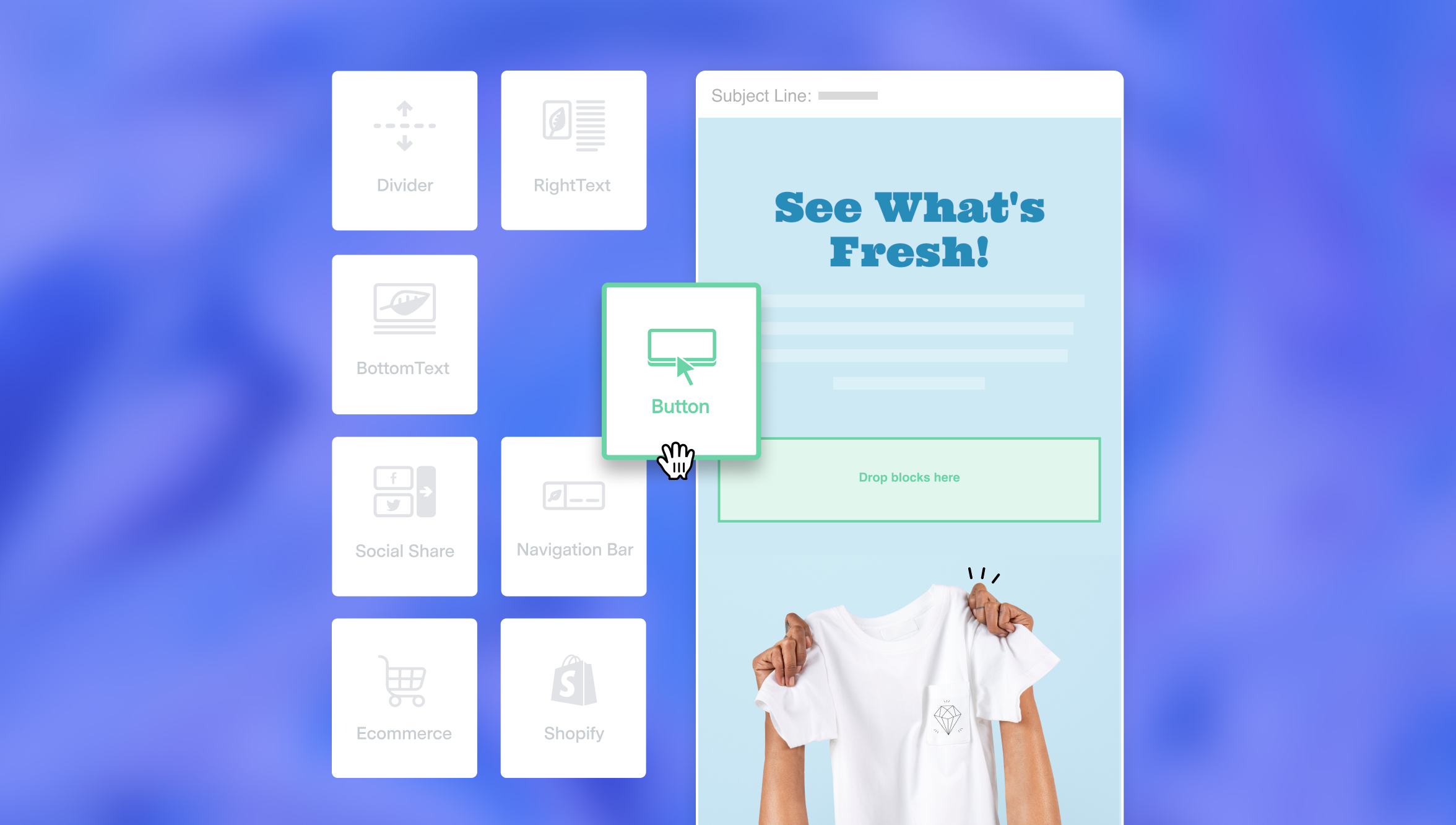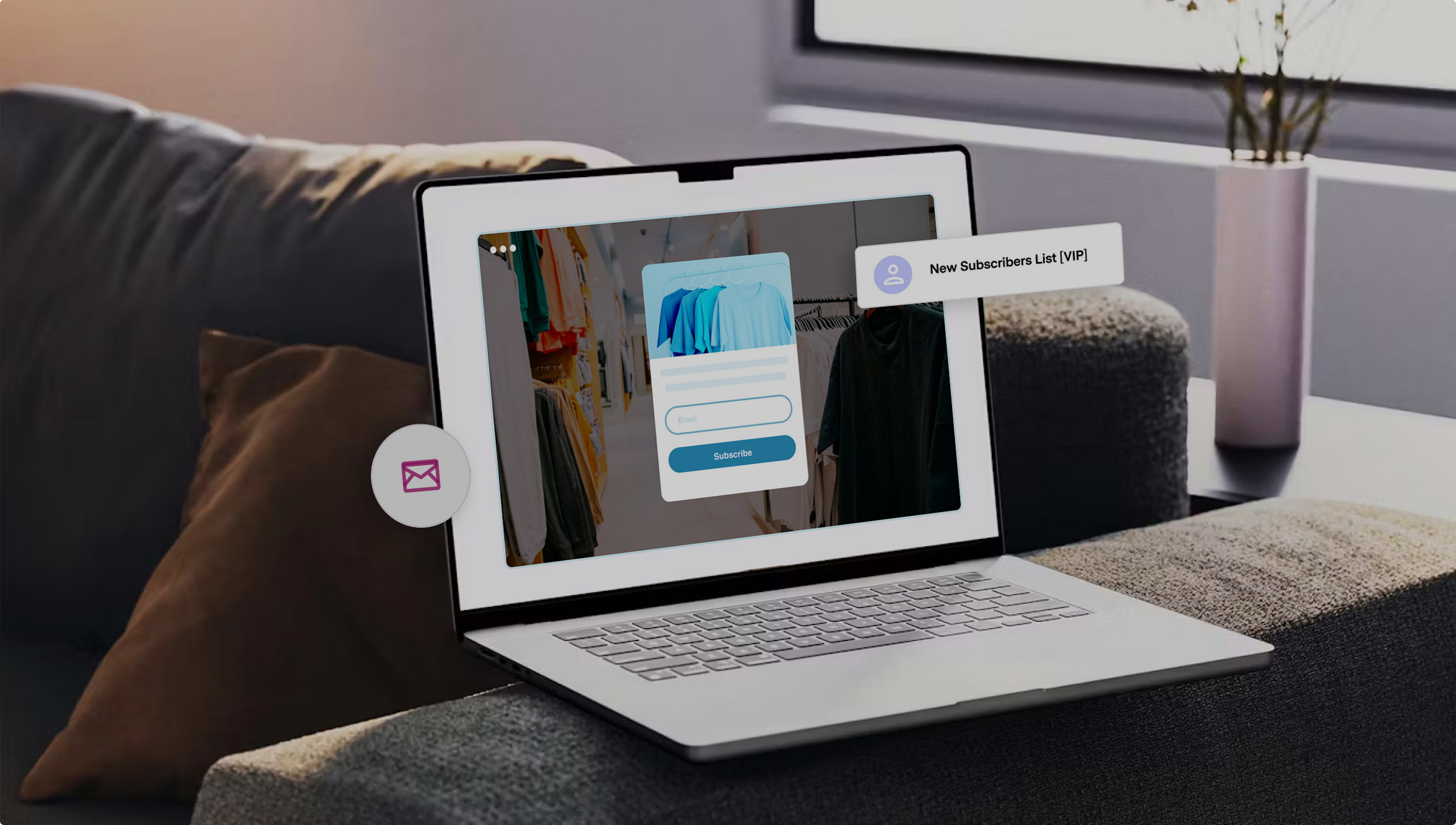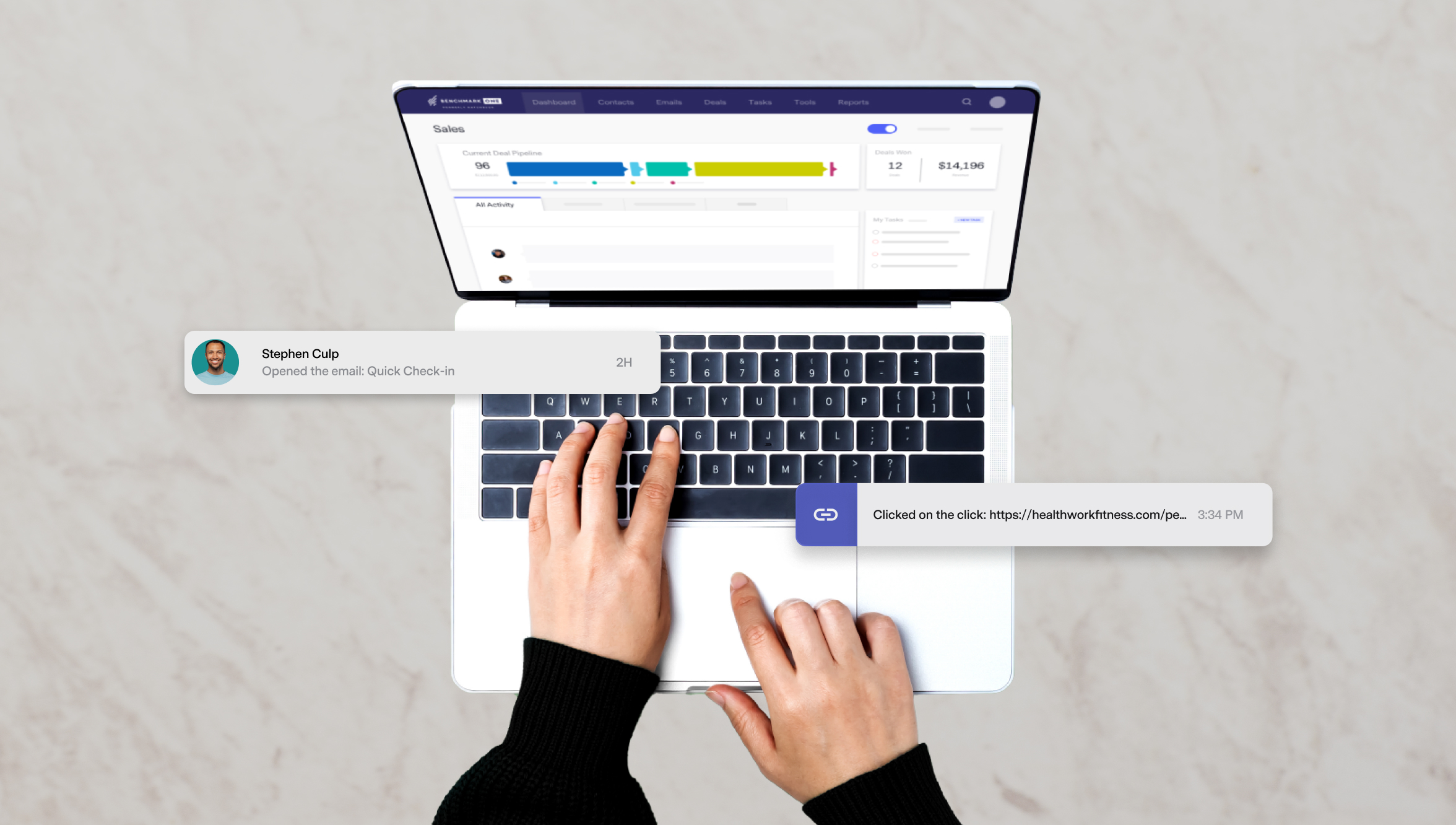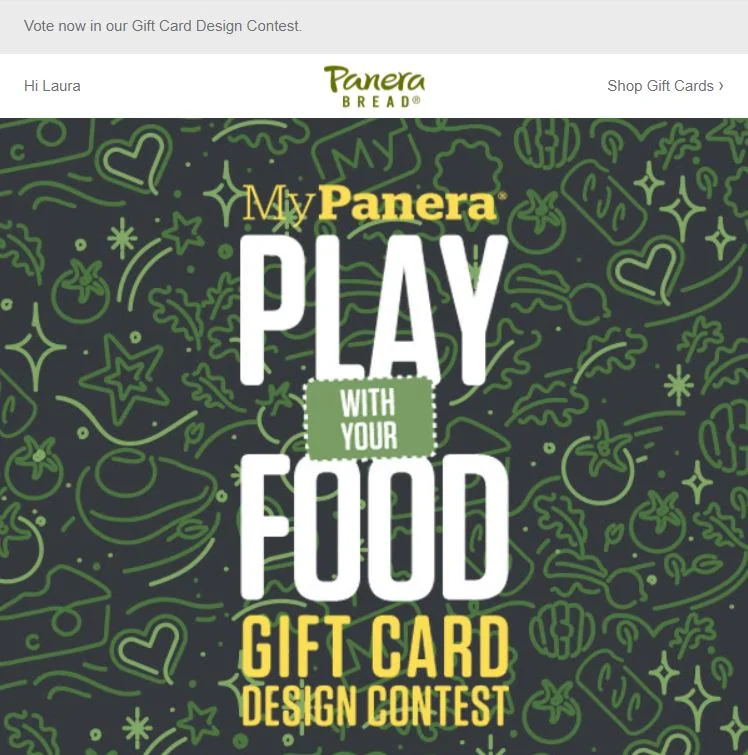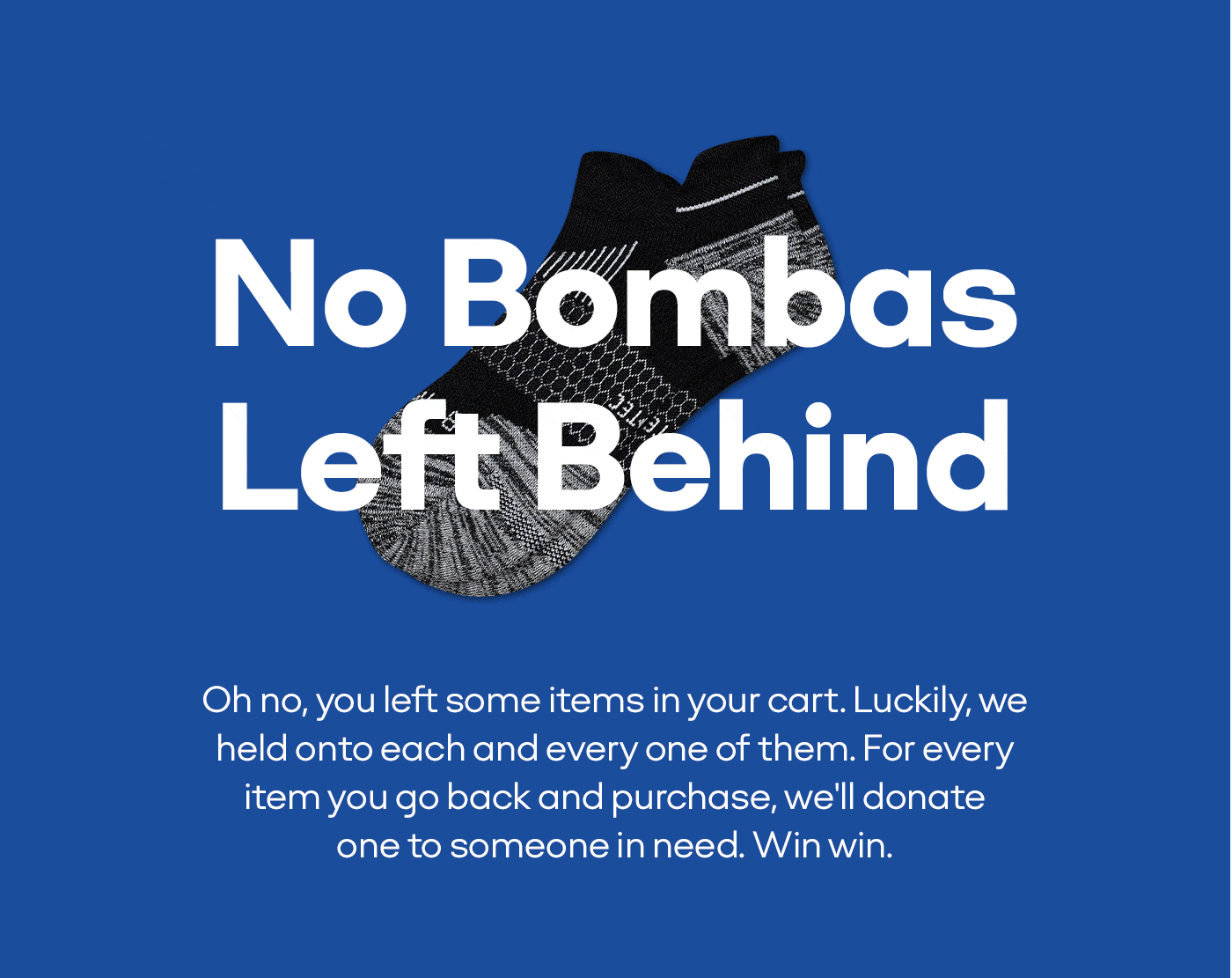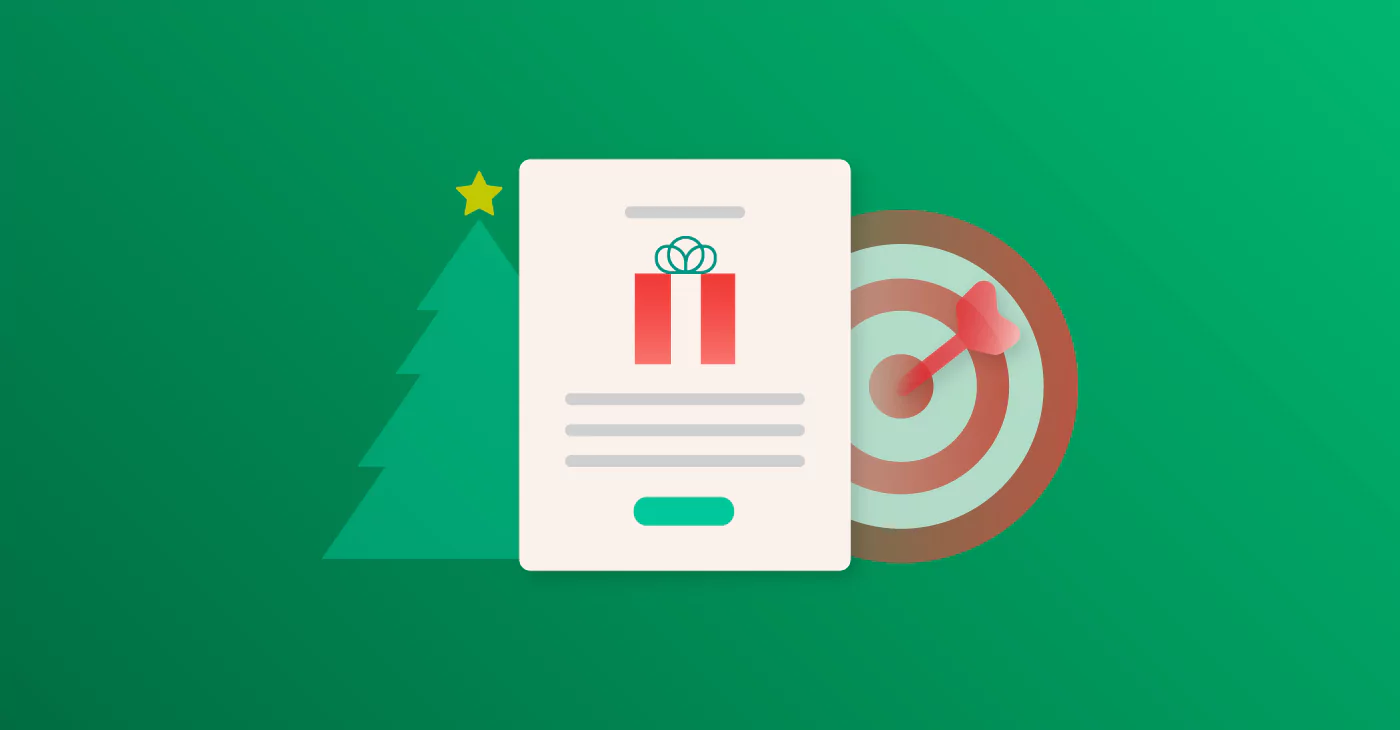Email Marketing Benchmark Recommends
What Is Email Personalization and Why Is it So Powerful?
September 5, 2023 10 min read
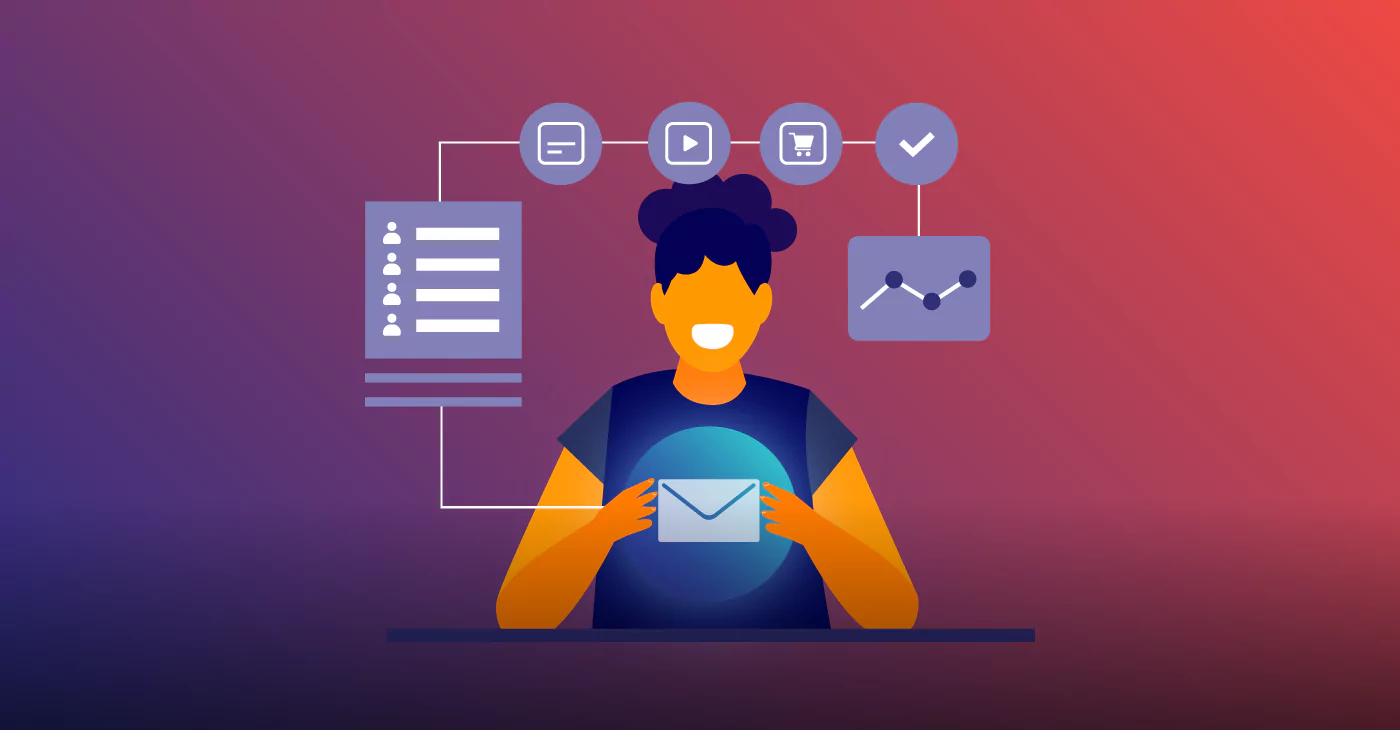
There is no denying the necessity of personalization in email marketing. Personalization increases open rates, and it shows your audience that you acknowledge and understand their wants and needs. It leads to more engaged readers driven toward action, and it’s pretty central to an effective lead nurture strategy.
According to Epsilon’s research, 80% of consumers say that they’re more willing to make a purchase when they’re provided with a personalized experience. As for where and how that personalization happens, half of marketing influencers cite email segmentation and individualized email messaging as their most effective personalization tactics. If you’re not personalizing your emails, you’re almost certainly losing customers to brands that do.
Personalization will make all of the difference when it comes to the success of your email outreach. Below, we’ll go over how to do it, as well as some of the benefits you can expect from putting in the effort.
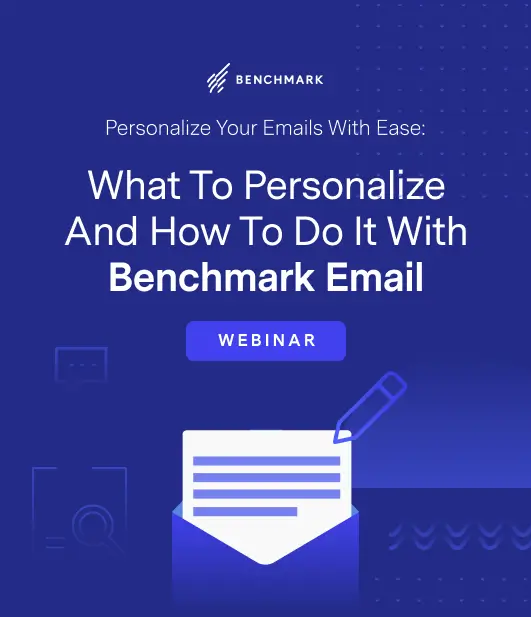
Personalize Your Emails with Ease: What to Personalize and How to Do it With Benchmark Email
DOWNLOAD NOWWhat are the Benefits of Email Personalization, and Why is it Important?
One of the key benefits of personalization in email marketing is its ability to capture the recipient’s attention. In a sea of generic emails, a personalized message that speaks directly to the recipient is much more likely to grab their attention and stand out. This can significantly increase the chances of the email being opened and read.
Another advantage of personalization is the ability to increase open rates. When recipients see their name or other personal details in the subject line or throughout the email, they feel a stronger connection to the message. This personal touch creates a sense of importance and relevance, making the recipient more likely to open the email and engage with its content.
Furthermore, personalization has been proven to boost engagement. By tailoring emails to suit the recipient’s preferences, interests, and past behaviors, businesses can provide content that is highly relevant and valuable. This not only encourages recipients to read the email but also increases the likelihood that they will take the desired action, such as making a purchase or signing up for a webinar.
Inboxes are busy places, and it’s not always easy to cut through the noise. If you want readers to open, read, and engage with your emails, you need to do something to stand out — and personalization is one method of doing so.
Marketers who employ personalization in their emails report 27% higher unique click rates and 11% higher open rates than those who do not. Meanwhile, 52% of consumers say they’ll look elsewhere for their shopping needs if a brand sends an email that’s not personalized.
Email personalization isn’t a guaranteed ticket to success. But on the flip side, a lack of personalization is a quick way to ensure less engagement with your message. If more opens, more clicks and more conversions are the goal, then personalization is an essential tool to make it all happen.
Basics of Personalized Emails
Using a recipient’s name — as opposed to a generic “hello” — is just the beginning of what goes into a personalized email. Other unique factors to keep in mind include:
- List segmentation: Grouping contacts together based on key demographics and where they are in the buyer’s journey so that recipients only receive content that’s relevant to them.
- Timeliness: Reaching out to potential and current customers with content and promotions that make sense for them at the moment.
- Human touch: Making clear that an email is coming from a real person, rather than just a general brand. This human-to-human connection is at the heart of personalization, with the “From” name alone having a big impact on whether recipients open an email.
- Automation: Automated tactics like drip campaigns use a recipient’s actions to determine what content they see next. Examples include a personalized promotion sent out on the heels of a new opt-in subscription or abandoned cart or useful instructional information that helps them get going with a new product or service purchase.
All of these factors play into personalization, and all of them have utility on their own. If you’re just getting started with email personalization, focus on one or two factors at a time and then expand your efforts from there.
The Types of Email Personalization
There are various ways to personalize emails and make them more relevant to individual recipients. One common approach is dynamic content insertion. This technique allows businesses to change the content of an email based on recipient data, such as their location, purchase history, or recent website activity. By showing recipients products or offers that are specifically tailored to their needs and preferences, businesses can significantly improve conversion rates.
Another effective way to personalize emails is by customizing the subject lines. By including the recipient’s name or other personal details, businesses can create subject lines that stand out in crowded inboxes and grab the recipient’s attention. This personal touch not only increases the chances of the email being opened but also creates a sense of importance and relevance.
Additionally, segmentation based on demographics is another powerful way to personalize emails. By dividing their email list into smaller segments based on factors such as age, gender, location, or interests, businesses can send more targeted and relevant content to each group. This level of personalization ensures that recipients receive content that is highly relevant to their specific needs and preferences.
Best Practices for Personalization
To effectively personalize emails, it’s important to follow some best practices. First and foremost, collecting relevant data is key. Businesses should gather as much information as possible about their subscribers, such as their preferences, purchase history, and demographics. This data will serve as the foundation for personalization and enable businesses to tailor their emails to individual recipients effectively.
Using an email marketing platform is another crucial best practice. These platforms provide advanced personalization features and automation capabilities that make it easier to create and send personalized emails at scale. With features like dynamic content insertion and easy segmentation, businesses can streamline their personalization efforts and ensure that the right message reaches the right person at the right time.
Lastly, testing and analyzing results is essential for optimizing personalization efforts. By testing different personalization strategies, subject lines, and content variations, businesses can identify what works best for their audience. Analyzing the results of these tests allows businesses to make data-driven decisions and continually refine their personalization techniques to improve engagement and conversions.
Common Mistakes to Avoid
While personalization can be highly effective, there are some common mistakes that businesses should avoid. One of these is overpersonalization. It’s important to find the right balance between personalization and generic content. Bombarding recipients with an excessive amount of personal details can come across as intrusive or creepy, leading to a negative perception of the brand.
Another mistake to avoid is insufficient data validation. It’s crucial to ensure that the data used for personalization is accurate and up-to-date. Sending personalized emails with incorrect information can harm the brand’s credibility and negatively impact the recipient’s experience.
Lastly, ignoring user preferences is a mistake that can quickly turn recipients away. Businesses should respect the preferences of their subscribers and provide options for them to customize the type and frequency of emails they receive. Ignoring these preferences can lead to higher unsubscribe rates and a loss of trust.
How to Personalize Your Emails
Here are some things that you can start doing right away to better personalize your emails and make more effective connections with your recipients.
Know Your Audience
You can’t personalize emails if you don’t know who you’re personalizing them for. Use a small business CRM to help you best understand your audience, including their actions and behaviors, pain points, needs, and so on. The fuller picture you can get of who your email recipients are, the better you can segment your messaging and ensure that the right people get the right content for moving further down the funnel.
Another integral part of knowing your audience is working with your sales team. Both sales and marketing have unique perspectives on what prospects and leads are looking for. By working together, you learn more about what matters and prevent the type of siloing that so often stands in the way of effective outreach. From there, your marketing team can create sales-enablement content and use it to fuel your personalized email marketing efforts.
Optimize Your Content
Think of your content strategy as part of a larger personalization cycle. Your audience informs what content you create, and then your content goes on to inform your audience. You need to understand what kinds of content your email recipients are looking for, as well as what specific information they need to become a first-time or repeat customer. This is another area where it’s key to work hand-in-hand with sales. The more you know about the content gaps preventing your sales team from closing a deal, the more you can create content that fills the gaps and makes it easier to lead a sale to completion.
Personalize Your Email Features
Segmentation and content are perhaps the two biggest factors involved in personalized email marketing, but they’re not the only ones. The devil is in the details too, which means you also need to be personalizing certain elements of each email you send.
- The subject line: Personalization of subject lines makes emails 26% more likely to be opened. Ways to do this include putting the recipient’s name in the subject line or making it something that’s particularly timely or relevant.
- CTA: Personalized calls to action, also known as smart CTAs, are targeted to individuals instead of everyone at once. And done well, they can convert 202% times more effectively than default CTAs.
- The “To” field: Sometimes, it really is as simple as using a recipient’s name. One place you should definitely be doing this is in the “To” field, as well as in the greeting at the beginning of the email.
A great way to take the guesswork out of personalization is through marketing automation software. A great automation platform will help you determine need-to-know factors like what pages your prospects visit, what content they download, and what actions they take on your site. All of that can help you determine how much they know about your product and what they still need to learn.
To distill it down: personalized email marketing means segmenting leads based on where they are in the buyer’s journey and then sending each list content that directly addresses their pain points. And both a CRM and email marketing automation software can make those tasks a whole lot easier and more effective.
As you introduce more personalized elements to your email, use analytics and A/B testing to evaluate what works best. Some things will track with your audience more than others, so use data to see what sorts of personalization tactics give you the most positive and most consistent results.
Examples of Personalized Emails
Curious about personalization in action? These brands are putting personalization to work — and likely seeing good engagement in return.
1. Colored Organics
Welcome emails are a prime example of successful personalization, reaching new subscribers right when they’ve shown active interest in a brand and their product or service. This Colored Organics welcome email takes it a step further, too, adding an incentive to purchase with a specialized welcome discount.
2. Panera Bread
There are two things Panera is doing right here: one, they’re referencing the recipient by name, and two, they’re targeting an engaged subscriber with content they might care about. This type of engagement wouldn’t necessarily work for all customers, but it’s well suited to this segment, which is individuals who are part of the chain’s loyalty program.
3. Bombas
This abandon cart email from Bombas uses clever imagery and copy, as well as a noticeable link to encourage buyers to get back to their unique purchases. They also inform you that for every purchase made, they’ll make a donation to someone in need. Who can say no to that?
The Future of Personalization
As technology continues to advance, the future of personalization in email marketing looks promising. One trend that is already making waves is the use of artificial intelligence and machine learning. These technologies enable businesses to analyze vast amounts of data and deliver highly personalized content based on individual preferences and behaviors. This level of personalization can significantly improve engagement and conversions.
Another exciting development is hyper-personalization. This takes personalization to the next level by creating individualized experiences for each recipient. Hyper-personalization goes beyond simply using the recipient’s name or previous purchase history. It involves tailoring every aspect of the email, including images, offers, and recommendations, to match the recipient’s unique preferences and interests.
However, as personalization becomes more advanced, privacy concerns also come into play. Businesses must ensure that they are transparent about the data they collect and how it is used. Respecting the privacy of recipients and providing options to opt out of personalized experiences will be crucial for maintaining trust and compliance with evolving privacy regulations.
The more you personalize, the more you connect. Make personalization a core part of your email marketing strategy and reach your audience with the content they’re looking for.
